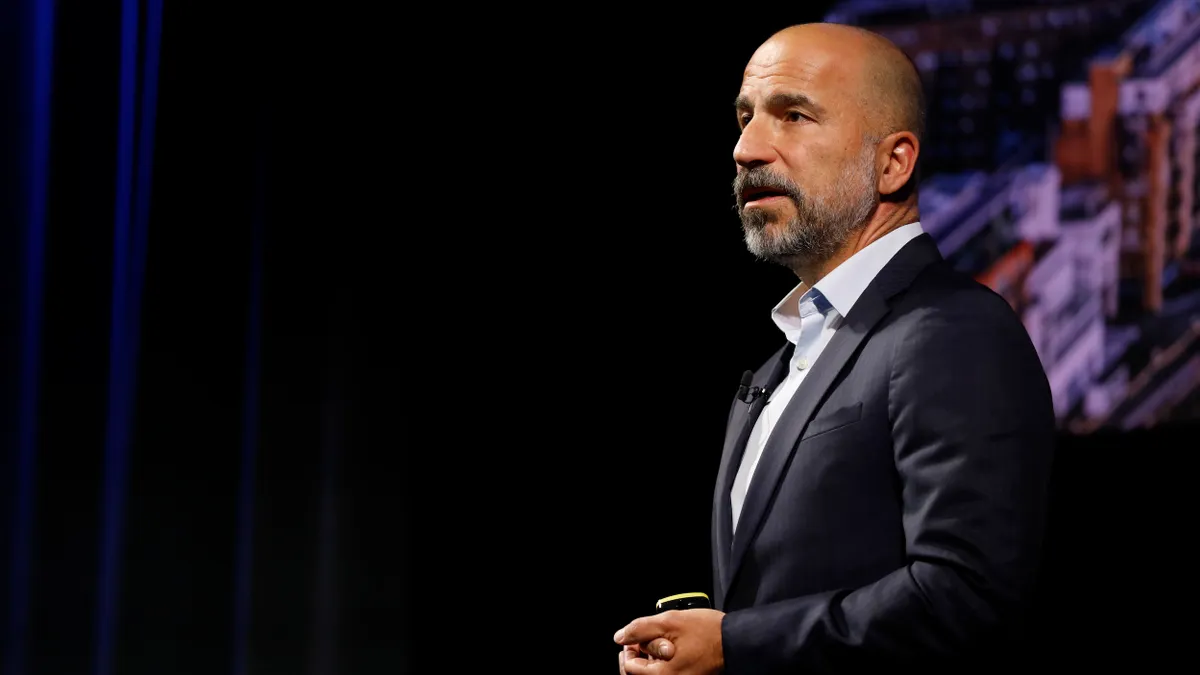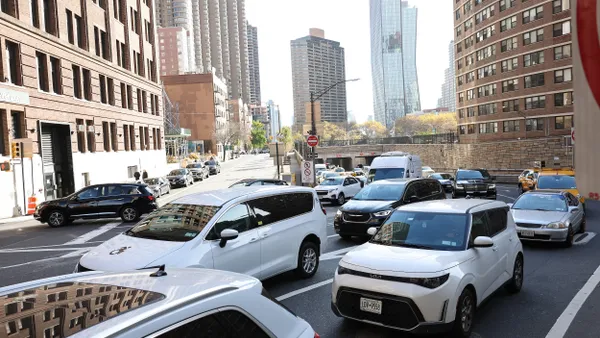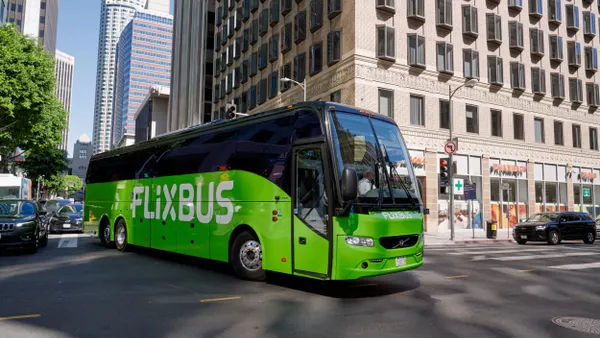Dive Brief:
- Passengers on Washington, DC's Metrorail will be allowed to bring bicycles on board trains during rush hour starting next week.
- This changes transit agency WMATA's longtime rule prohibiting bikes in train cars on weekdays from 7-10 a.m. and 4-7 p.m.
- WMATA anticipates the change will make Metrorail a more attractive option for bike commuters. The agency would like to boost the number of customers arriving at rail stations by bike from the 0.8% measured in 2016 to 2.1% by 2020.
Dive Insight:
Allowing bikes on rail cars can be a controversial topic. As cities intensify their focus on reducing citizens' car dependency to alleviate congestion and meet environmental goals, biking and transit are two main alternative options that can complement each other. But bikes take up space on train cars and can create frustrations or even safety hazards for fellow passengers, particularly during rush hour when cities' subways already are jammed.
How to handle the bike-rail dilemma varies by city. Atlanta's MARTA allows bikes on board at all times. New York's MTA does as well, although riders are strongly encouraged not to carry bikes onto rush hour trains. San Francisco's BART does not allow bikes in the first three cars of a train during weekday morning and evening rush hours, and "regardless of any other rule, bikes are never allowed on crowded cars." Like DC, Chicago's CTA allows bikes on trains all the time except weekday rush hours.
DC's Metro did not allow bikes on board at all when it opened in the 1970s, up until 1982 when riders could obtain a paid permit that was valid only on weekends and holidays. Permits were eliminated in 1998 and the current policy of banning bikes during rush hour went into effect in 2001. Metro decided to make the change to allow bikes at all times because it “received requests from Washington Area Bicyclist Association (WABA) and others in the bicycle community asking us to take a fresh look at our policy,” Metro Chief Operating Officer Joe Leader said in a statement. "We believe this change supports ridership growth by Metro and a commuting option for those who want to have a bike with them," he continued.
During a time when the U.S. Census Bureau notes nationwide dips in overall commuter transit ridership, transit agencies are working hard to retain existing riders and find new ones. Subways do present the one bright spot with slight ridership growth and agencies can't afford to lose that momentum. Becoming more welcoming of cyclists presents an area of opportunity for transit agencies.
Striking the right bike-on-train policy balance certainly will continue to vex transit agencies in the near term, but DC's Metro anticipates its new policy won't have major negative effects. It is hopeful that the change will be particularly attractive to reverse commuters who ride lesser-populated trains outbound and until now have been subject to the same prohibitive rules as commuters riding packed trains into the city.












